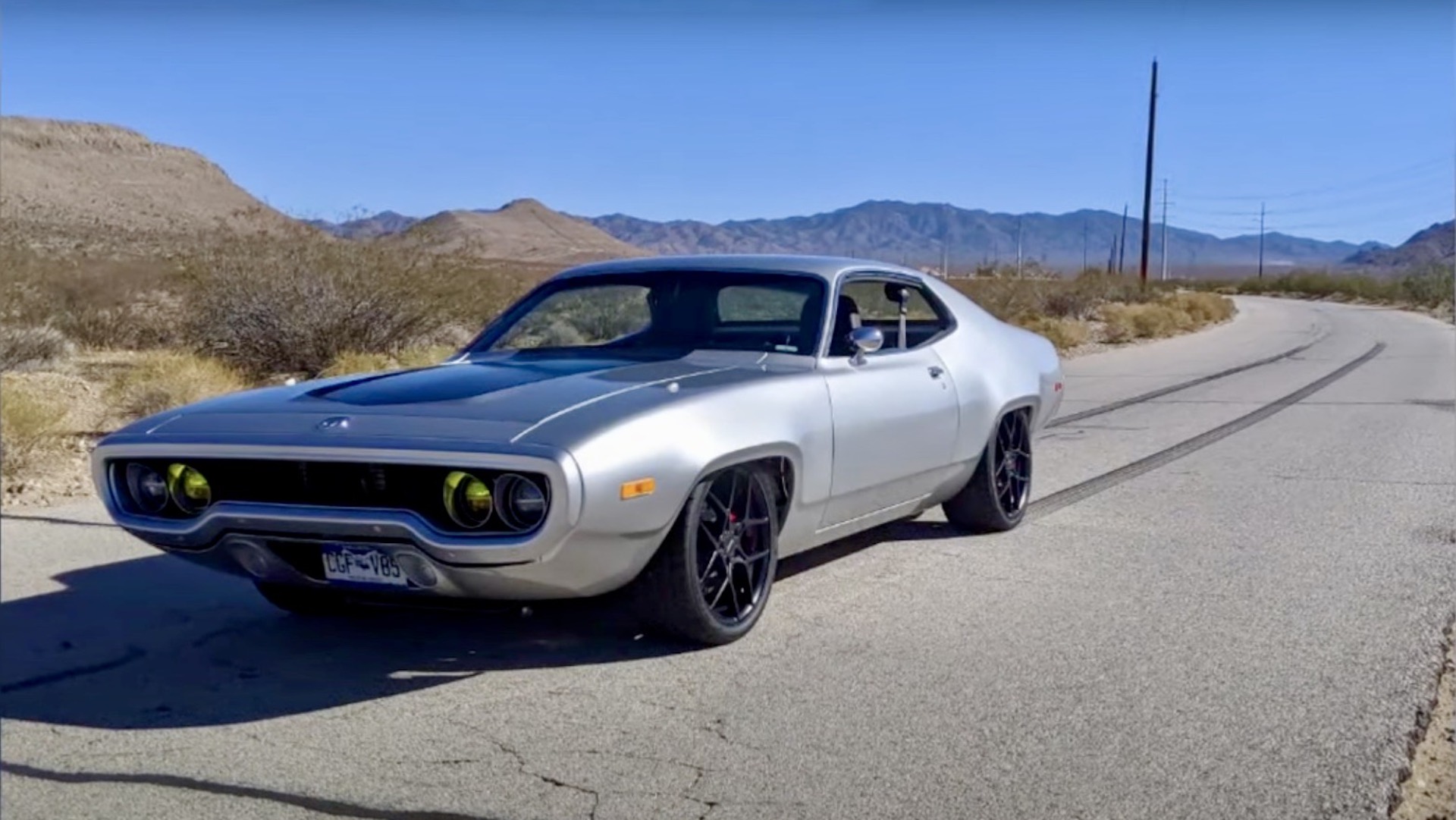

Rich Benoit—or as he’s better known on YouTube, Rich Rebuilds—made a name for himself playing with Teslas, including V8-swapping one. Most of the vehicles featured on his channel are his own, but recently the YouTuber decided to showcase a car that was someone else’s project, and boy, what a build it is.
Meet Kevin Erickson, the man from Denver, Colorado who Rich and his crew recently ran into during their travels. Kevin owns a beautiful 1972 Plymouth Satellite, a classic example of American muscle that normally has something a bit rumbly and gas-guzzling under the hood. In case you haven’t connected the dots by now, the Plymouth no longer has a V8—or any internal combustion engine. Say hello to the Tesla-swapped Satellite.

The Plymouth, which is nicknamed Electrolite, is powered by the guts ripped from a Tesla Model S. The sedan’s rear-drive unit and subframe were yanked to act as the heart of the restomod, and a 100kWh Tesla battery pack was purchased from a Tesla parts supplier to power the large electric motor.
In order to make the battery pack fit inside of the 50-year-old car, Kevin had to make some fabrication decisions. He removed individual modules (which are essentially densely-packed cells) and organized them in the front and rear of the car, even cooling the modules by emulating the same coolant routing as the factory pack. Power is then fed through various aftermarket (non-Tesla) power control components and eventually to the rear wheels.
Kevin didn’t share the car’s final horsepower or performance specs, but he does take the car to the drag strip where it runs a rather impressive 12.4-second quarter-mile at 106 mph. In a separate video, he says that the motor he used is a Model S “large sport drive unit,” which can offer up to 536 horsepower in Performance-trim cars.
It also gets a pretty decent range for a restomodded classic. When not run down the track like a maniac, the 100kWh pack and rear drive unit provide an alleged 250 miles of real-world driving range. He believes that if he actually babied the car and aimed for efficient driving that he could hit almost 300 miles on a single charge.

From the factory, the Satellite weighed around 3,400 pounds. In its new battery-powered configuration, the car clocked in at a whopping 4,358. That might seem like a lot, but keep in mind that it’s still 600 pounds lighter than a stock Tesla Model S. We often think of old muscle cars as being boat anchors, but new cars (especially electric ones) are very heavy.
Even the suspension on the car is tweaked to modernize the platform. In the rear of the Plymouth sits an exotic-like pushrod suspension, which was actually done out of necessity rather than as a performance modification. According to Erickson, the Telsa Model S subframe that was used to mount the rear-drive unit left no room for springs under the car, so he used cardboard and screwdrivers to template out what a pushrod suspension setup might look like and then turned it into a reality.

Now, sure, the swap is impressive, but what really sets this build apart is Kevin’s attention to detail. During the 1.5 years that the car spent under the knife, Kevin was committed to adding just about every modern luxury to make it a comfortable daily driver. That meant retrofitting power windows, air conditioning, heated seats, and a digital dashboard, all without cutting a hole into any single factory interior component. Even the start/stop button was placed in a hole previously used by a map light in order to keep that true.
Another interesting decision was the front power steering rack. Since the mechanical hydraulic components were mostly removed (except for brakes, of course), a solution was needed to steer the Plymouth’s front wheels. A looped steering rack would probably work, but with everything else on the swap done properly, why stop there? Kevin sourced an electric power steering rack from a company that specializes in retrofitting classic cars and installed it.

Now for the big question: “Why go through all this trouble?”
Kevin says that he simply wanted to learn something new. As a life-long car enthusiast, he worked his way up from tuning cars to playing around with modern electronic fuel injection. But with electric cars undeniably being the future, Kevin decided to pick up a Tesla powerplant and get to work.
The car has won best-in-show at Holley High Voltage, which is Holley’s take on being enthusiastic about the future of electric vehicles (kind of like Autopia 2099). If you’re interested in seeing more of the Plymouth build, Kevin does a great job on his own YouTube channel.
Got a tip or question for the author? Contact them directly: rob@thedrive.com